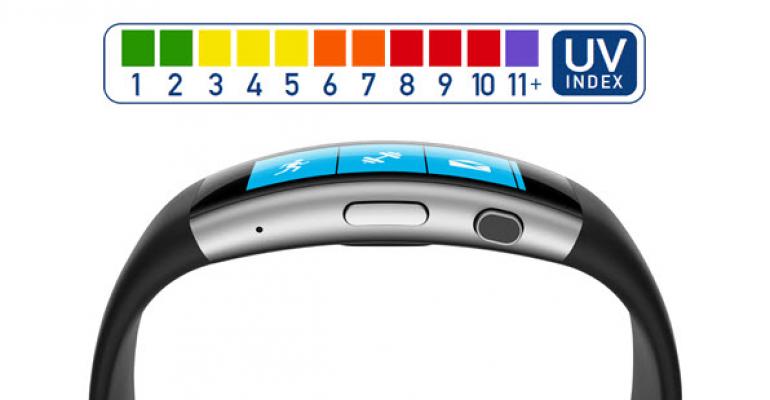One of the neat sensors built into both Microsoft Band v1 and v2 is the ability to detect the amount of UV light to help keep radiation exposure to a minimum. As you probably already know, over-exposure can lead to suntan, freckling and sunburn along with higher risk of skin cancer. If you’re outside for a long run or bike session in the sun, it’s a great feature to ensure you applied enough sunblock or that you’re scheduling your runs and bike rides around heightened exposure.
Microsoft Band 2 has a number of new features and improvements over the 1st iteration, but one that isn’t talked about often is the UV monitoring and alerting feature.
Band v1 offered just a simple tile that you could access, which you could then use to initiate a UV check. After the sensor did its job by analyzing the UV environment around you, it would report back Extreme, Very High, High, Medium, Low, or None, based on the international guideline UV index number. For Band v1, the UV sensor was to the left of the face of the wearable.
Microsoft changed the location of the sensor for Band v2 to better expose it to UV rays based on wearing the Band with the face inside the wrist and Microsoft has added a couple new features for UV detection. First, the UV sensor will alert you automatically when UV detects exposure to UV light (instead of you having to manually kick off analysis). This second feature, which is enabled by the first feature, allows you to set reminders for prolonged UV exposure.

Setting an alert could help you remember that you need to slather on additional sunscreen periodically, or that you need to take a covered break to avoid detrimental radiation. Additionally, your minutes of exposure are logged in the Microsoft Health dashboard.






